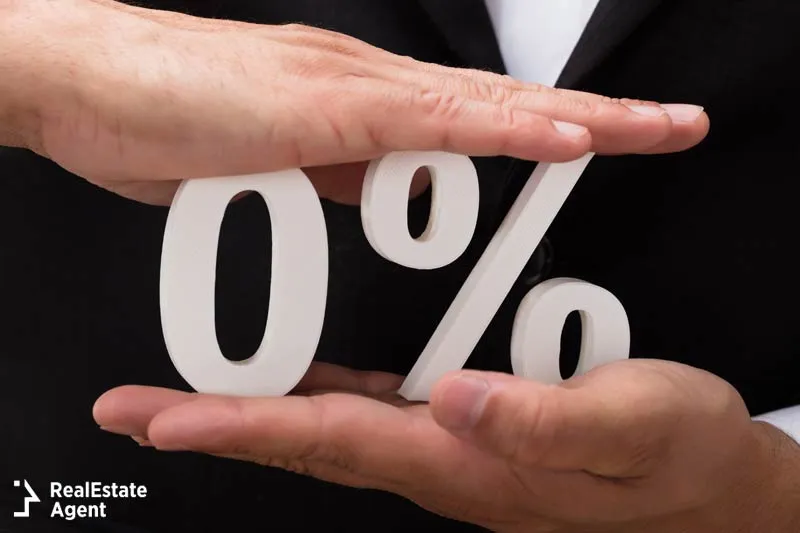 To pay interest means to work twice for the same money. In other words, it reduces your productivity. When you are paying interest, you are simply treading water, that is you’re not making any progress. Despite this fact, most passive income opportunities rely on interest and especially on compound interest.
To pay interest means to work twice for the same money. In other words, it reduces your productivity. When you are paying interest, you are simply treading water, that is you’re not making any progress. Despite this fact, most passive income opportunities rely on interest and especially on compound interest.
There are many different definitions of interest, but in short, it is perceived as the cost of borrowed money. Interest is as old as the human race, yet nobody received a Nobel prize for inventing it. We have it in our blood. Just ask anyone how you can get money without working, and the first answer will be: “Interest! You have to gain interest!” Many Americans are caught in this quest for easy money. The epicenter of interest-generating businesses is on Wall Street. The stock exchange is a parallel credit system that allows individuals and companies to behave like banks - to lend the money that they don’t use, their “excessive” capital, and receive interest for crediting other businesses. The lucky ones get up to 12% return-on-investment (ROI), however, they are extremely rare. If you invest in stocks and bonds, a 6% annual interest is the average expectancy.
We would go even further and say that banks’ profits are made up entirely of interest. Every tax or commission they ask can be labeled “interest” - banks don’t make money on their own. Banks’ employees do not generate money, even though they are “employed”. Their salaries are paid by those who borrow money through their different types of loans.
Top 5 US banks by the number of employees:
Wells Fargo Bank: 232,321
JPMorgan Chase Bank: 191,929
Citibank: 169,092
Bank of America: 142,412
U.S. Bank: 71,180
(Statista, data at the end of 2017)
So, the first five banks of the United States entered 2018 with 806,934 employees. Obviously, with so many banks and lending institutions around, the number of employees of the banking system is way over 1 million. Furthermore, according to Forbes, 15.3% of the workforce is employed by the public sector - about 7.42 million Americans worked for the Government or occupied other public administration jobs in 2018, according to Statista. All these jobs are supported by the Americans employed in the private system. Democracies function on this model all over the world. According to the same source, there were about 128.5 million full-time employees in 2018. So their tax money and interest payments have to cover the salaries, the utilities, the gas and so many other expenses of both the public sector and the banking sector. Banks’ business model is one of the best passive income strategies reserved for the elite.
To summarize, the banks need interest to exist. Interest is paid by borrowers. Consequently, there must be a constant flow of borrowers to maintain the interest faucet open and pouring. Borrowers, in turn, need a job to be able to pay off their debt. Therefore, interest is easy money for the banking system. They don’t do much to generate it, because somebody else has been working their fingers to the bone to pay off a mortgage, a personal loan or a business line of credit. This is probably the absurdity of our modern financial system: millions work hard to pay the wages of a few. We don’t have the space to dig deeper in this article, but if you’re curious, you will find that most of America’s millionaires are direct or indirect lenders. This is the key to understanding economic inequality.
We could be tempted to say that for the one who charges interest, that sum of money is “money he/she has done nothing for”, while for the one who pays interest, that sum of money is “money he/she has worked hard for”. This approach would be unfair, though. Banks take huge risks when lending money to strangers. They have to make sure that their depositors’ money is covered - that’s why they require collaterals to secure certain loans. Wouldn’t you do the same?
While the public sector is providing services that benefit us all, as citizens, not the same thing we can say about the bankers, who dragged us all through a financial crisis only 12 years ago. Banks create money out of thin air and we have accepted them without putting too many questions about where their money comes from. We have come to embrace them as the magicians who keep the American dream alive. But from a different point of view, banks also keep America’s savings safe, away from thieves and burglars, giving us peace of mind and a sense of security. So, banks are storage facilities for our money and by leaving our savings there, we allow banks to use the money we don’t need right now as the basis for other loans. The banking system is a closed circuit that’s been working for decades, but we are the ones who decide how much our lives depend on it.
The relationship between the key rate and prime rate
The key interest rate has two components: the discount rate and the Federal Funds rate. When banks need more cash and have to borrow from the Federal Reserve, then they are charged a discounted rate. When banks borrow money from one another, they pay the Federal Funds rate. By lowering or increasing the discount rate, the Federal Reserve is controlling the demand for credit. When the discount rate is high, borrowing money is more expensive, so the demand for loans will be lower. When the Federal Reserve wants to pump money into the economy, the discount rate is lowered and the population has access to low-interest loans.
According to TradingEconomics, Fed officials expect the key rate to be 2.1% at the end of 2019 and 1.9% in 2020. The federal funds rate is currently 2.5%. Since December 2018, the discount rate was 3% and is supposed to remain unchanged until 2021.
The prime rate is the best interest rate offered by commercial banks to borrowers with the best credit scores. The prime rate is usually 3 percentage points above the Fed Funds rate, which means that currently, the prime rate is 5.5%.
Are there loans with 0% interest?
The best things in life are free, but loans are not among them. Loans are a means of borrowing money from our own future earnings. For one moment, we might have the illusion that we’ve just made a ton of cash without working, but in fact, we are going to repay it with a cherry on top - that is, with a lot of interest. In other words, loans are a way of forcing ourselves to save money. So, when we borrow, we don’t automatically become richer, because that’s where we would have probably been anyway, penny-pinching. We may enjoy some capital gain, though, if our homes increase in value over the years.
There’s no loan with 0% interest. By not charging interest, banks would give up their bread and butter! You have to be extremely careful and read the fine print together with an attorney even when you want to get a 0% APR loan. Credit cards with 0% interest on consumer goods are also misleading, because, although they advertise 0% APR, that is only for a limited time (usually one year). After that period, interest is charged on all purchases. These credit cards might also have a monthly/annual cost and transfer fees, so, there you are! 0% APR credit cards are not completely free, and as we said, all the small fees add up and can be considered “interest” because you are paying those from the fruits of your labor.
There is no home loan with 0% interest, either! But, the good news is that there are home loans with 0% down payment. You should read more about the VA loans and see if you meet their requirements. VA loans have a lower interest rate as well. Besides VA loans, FHA loans are also cheaper and you might qualify for a mortgage with only 3.5% down payment!
As you probably know, banks decide what interest to charge you depending on your credit score. What credit score did you have when you signed your mortgage agreement?
- Credit score 740 and higher - the best interest rate
- Credit score 680-739 - the most common score among home buyers. You can expect an insignificant increase in the interest rate.
- Credit score 620-679 - you could be charged 0.5% more than those with the highest scores
- Credit score 580-619 - you could pay as much as 1% more in interest
- Credit score 579 and lower - Your interest rate could increase by as much as 2%.
In the following paragraphs, we will give you a few ideas about how to lower your interest and passive income strategies to cover the cost of your loans by working smarter, not harder.
 How to stop paying interest on your home loan?
How to stop paying interest on your home loan?
It seems that the banking system is artificially hiding the true price of real estate behind the magic word “interest” - an uncertain cost that we will have to pay over the years to enjoy a noble title like “homeowner” or “landlord”.
As absurd as it may sound, you can stop looking at your monthly payments as made up of interest and principal. You have to look at the total cost of your loan over the years. Pay attention to your APR (annual percentage rate) - that is the maximum you’ll have to pay for your house, so instead of saying that you’ve bought a house for $200,000, if you’re going to pay 100% interest over 30 years, you can say that you’ve just bought a $400,000 property, with a monthly payment of $1,111.11. Ta-da! The interest is gone! You’re paying only principal now.
Here is another trick. By charging interest, banks behave like landlords. For them, homeowners are renters, but they don’t collect rent - they charge interest. A play-on-words… It might sound more elegant and not too humbling for the new homeowners. How many people would buy homes if they were treated like renters? So, do you want to stop paying interest on your home loan? Then replace the word “interest” with “rent”. Imagine that you’re paying rent to use the house either to reside in it or as an investment property until you make your last payment from your mortgage amortization schedule. Basically, mortgages are like a rent-to-own agreement, but your monthly payments could be lower than the rent for a similar property in your neighborhood.
How to pay less interest on your loan?
Normally, on your mortgage amortization schedule, monthly payments are made up of principal and interest. But, from a different viewpoint, for a 30-year mortgage that costs 100% of your loan amount, it means that for 15 years, you work only to pay interest. The only way to pay less interest is to either pay more every month or make by-monthly payments. There are 52 weeks in a year, so when you make payments every two weeks, you gain one extra month. You can’t skip payments. You only reduce the term of the loan and the amount of interest that you end up paying. However, read your loan documentation or ask your lender if there are any surcharges for paying the principal sooner than stipulated in your mortgage amortization schedule. It’s usually referred to as a “prepayment penalty”. Fannie Mae, Freddie Mac, FHA Loans, VA Loans, USDA Loans, and many states do not allow this practice, but it never hurts to double-check.
If you pay early or decide to refinance your mortgage, your lender could impose a soft prepayment penalty or a hard prepayment penalty. These charges are a way of covering the lost interest. Refinancing your loan has minimal impact on your credit score - it might lower your interest rate and your monthly payments, but not necessarily the overall cost of the loan.
You may also want to look at different types of life insurance policies. These are great tools to save money for rainy days. Look for life insurance with return of premium (ROP). If you outlive the term, you can get all the money invested back and use it either to pay your mortgage faster or for home improvements that increase the value of your property such as a basement remodel or a greenhouse in your backyard.
Take a look at our passive income strategies below to lower the burden of your monthly payments!
 How to pay 0% interest on your loan?
How to pay 0% interest on your loan?
We’ve just seen that for the one who pays it, interest is money he/she has worked for, while for the one who receives it, interest means money gained without effort. If you owe interest, then the only way to cancel it is to earn at least the same amount of interest. In this way, you won’t work for that money and your productivity will not be affected. Once you reach that point you can really say that you’re accumulating wealth. How to get out of the rat race? With a passive income strategy. You may have one stream of residual income or multiple streams of income.
23 passive income opportunities
Money doesn’t grow on trees, but you can plant your own trees that bear fruits continuously. Just don’t let the time fly! Some fruit trees need some time before they begin producing fruit. Here are a few ideas that could bring you money even when sound asleep.
A. Use your gifts to generate passive income!
- We all have some hidden talents or some passions that could be taken to the next level. Make it happen! Start writing a blog or a book! Record your first album! Prepare your first exhibition! Do what you love and you will find a way to make money out of it!
- Are you good at crafts? You may open a shop on etsy[dot]com, sell on Craigslist, or create your own website.
- Do you like to take photos? Start a product photography business or offer portrait sessions. You can also specialize in wedding photography or newborn photography. Another niche is real estate photography - your photos and videos could help real estate agents create enticing listings that will quickly get a buyer. Great passive income sources are websites where you can sell your photos royalty free: Shutterstock, Dreamstime and the like.
- Vlogs are another way to earn money not only through Google Adwords, by allowing ads to be displayed on your videos, but also through product placings. If you’re an expert in your field, you may consider filming a course and sell it on a pay-per-view basis either on YouTube or Vimeo.
- Become a real estate agent! You may possess all the qualities of a successful REALTOR®. You have to pass the real estate exam in your state first, but then you can build your career working as little or as long as you want.
B. Let your money generate passive income!
- Invest in stocks and bonds, mutual funds or treasury securities. Of course, you will need a lot of expert advice on this topic, so make sure you start with a reputable stockbroker. In this way, you will make others work for your interest.
- Look for a premium return life insurance or any other kind of life insurance with cash back at the end of the term. It’s a way to save money while making sure that your loved ones will get a nice lump of money upon your death.
- Think about a subscription service or business that doesn’t exist or that you could do better, then invest in it!
- If you don’t like risk, open a high-yield savings account.
- Start an online business! Endless opportunities await you on the Internet! You can buy a blog or a website that is already profitable or at least has good traffic. You can also try affiliate marketing - start a good blog and sell products from the giants of e-commerce like Amazon.
- Start a vending machine business! Coffee, food, sweets or flowers? There are plenty to choose from!
- Try peer-to-peer lending or become a hard money lender!
- Start a franchise business!
C. Use your house and land to generate passive income!
- Rent a room or get a roommate!
- Start gardening! People are looking for organic products, fresh and tasty vegetables that haven’t spent days in traffic. Build a high tunnel or a greenhouse and look for year-round crops. However, if you really want a passive income from your land, then look for perennials. You may even grow cut flowers or greens for the local florists!
- Why not buy a larger house that could be turned into a guest house or a boutique hotel? If you pay a mortgage anyway, why not make the property pay for itself? Live and work in the same place!
- Build a hotel for other people’s pets! Every day, people are forced to rehome their pets or find temporary shelter for them.
- Get a second mortgage for a rental property! It could be residential or commercial - it’s up to you.
- If you have plenty of space, start a kindergarten, a daycare business, a babysitting service or an after-school program for your neighbors.
- Rent your backyard for parties! Turn your green space into a nice backdrop for birthday parties, bridal showers or other events. Plant some flowers, prepare a photo-corner, add some nice lights and you’re ready to go!
- Speaking of events, think about renting cocktail tables, chairs, gazebos or various decorations.
- Start a bicycle rental business! You may also rent ATVs or snowmobiles! You can even rent basic tools like a chainsaw or a drill.
- Rent decorations and props for photographers!
- Rent storage space or parking places
Do you have other passive income opportunities in mind? Feel free to share them in a comment!





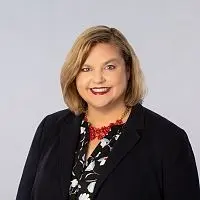
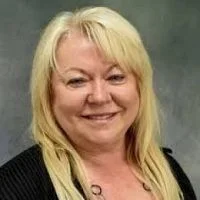

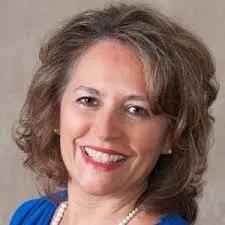
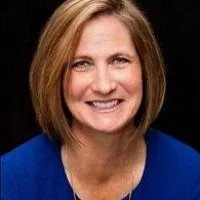
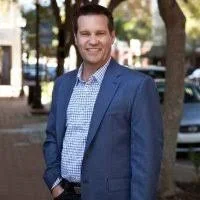




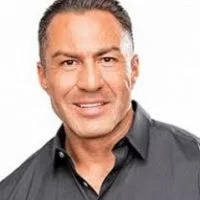

Have a question or comment?
We're here to help.